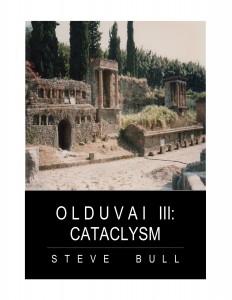Home » Posts tagged 'forest fires'
Tag Archives: forest fires
The Bulletin: August 27-September 2, 2025
The Bulletin: August 27-September 2, 2025 This past week’s articles of interest… CLICK HERE If you’re new to my writing, check out this overview. Experts Warn The Internet Will Go Down In A Big Way — And You’d Better Be Ready Bioregioning Is Our Future – resilience Forest Fires: The Disheartening Post of the Day […]
The Bulletin: June 19-25, 2025
The Bulletin: June 19-25, 2025 This past week’s articles of interest… CLICK HERE If you’re new to my writing, check out this overview. Study finds planetary waves linked to wild summer weather have tripled since 1950 A.I. Is Poised to Rewrite History. Literally. – The New York Times IEA Doubles Down On Peak Oil […]
The Future of Fire in Canada
The Future of Fire in Canada We’re on the brink of a ‘runaway fire age.’ Here’s why. And how to respond. A motorist watches from the Trans-Canada Highway as a wildfire sweeps down a mountain near Lytton, BC, destroying the town on July 1. Photo by Darryl Dyck, the Canadian Press. Five days after wildfire destroyed […]
Half a degree may make heat impact far worse
Half a degree may make heat impact far worse The US south-west may have more drought and forest fires with 0.5°C more heat. Image: By RD Gray on Unsplash Half a degree of warming doesn’t sound like much. But there is fresh evidence that it could make a huge difference to rainfall and drought. LONDON, 4 April, 2019 − Japanese […]
Who or What Is Really Responsible for the Huge Forest Fires in California?
Who or What Is Really Responsible for the Huge Forest Fires in California? Once again, faced with the failure of the “press” to educate us on an issue, we decided to go out and research the truth about what appears to be the significant increase in huge forest fires. Once we did the research, we […]
Logging Can’t Restore Burnt Forests
Logging Can’t Restore Burnt Forests Photo by USDA Forest Service Alaska | CC BY 2.0 Every time I drive up to Mount Bachelor in Central Oregon I pass the Deschutes National Forest’s logging and mastication projects. The Forest Service and the Deschutes Collaborative suggest they are “thinning” the forest to preclude large wildfires and to […]
With Climate Change, a Terrifying New Normal for Western Firefighters
With Climate Change, a Terrifying New Normal for Western Firefighters In the last two decades, officials in Colorado have watched as massive, months-long wildfires have become a regular occurrence in their state. A Yale Environment 360 video goes onto the front lines with Colorado firefighters who describe what it’s like to continuously confront deadly blazes fueled […]
Experts Make Case for Letting Canada’s Wildfires Burn
Experts Make Case for Letting Canada’s Wildfires Burn Fires ‘reset the landscape to be less flammable,’ say researchers. As climate change is fingered as a catalyst driving the early rash of forest fires across northern and western Canada, experts say the most prudent approach at this stage is to, whenever possible, let the fires burn. Western Canada […]
Missing from Canada’s Political Debate: Natural Security
Missing from Canada’s Political Debate: Natural Security 25-year review of Canada’s eco-stewardship reveals neglect across party stripes. Canada’s prime minister is pre-campaigning with a strong-on-security message. His government is taking measures designed, among other goals, to protect energy infrastructure from what the RCMP has called “violent environmental extremists.” As I write, enormous forest fires burning out of control across […]



